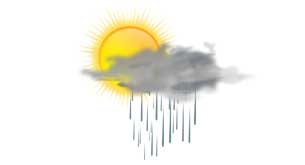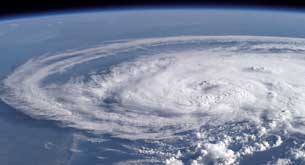Weather Facts for Kids
Posted by Admin / in Science Facts
Weather is something most people experience everyday. From a warm spring day, a hurricane near the ocean or a rainy fall night, there are many types of weather on our Earth. There are scientific reasons that the weather continues to change. Find out facts about weather and facts about why the weather changes.

Will it rain today? Scientists who are called meteorologists may be able to tell us
Weather Facts
- The seasons are one factor in the weather we see. The amount of sunlight a location receives changes with the changing seasons. There is more seasonal changes at locations closer to the Earth's poles.
- Scientists also discovered that air pressure causes weather changes. A high air pressure causes the air to sink becoming warmer and drier. A low air pressure causes air to rise, collecting more moisture. Low air pressure typically results in rain, hail, snow or other moisture to fall from the sky.
- Normal atmospheric pressure is heavy. The pressure from the atmosphere pushes 20,808 pounds (9418 N) on a 12 inch (30.48 cm) square, which is just under the weight of a small dump truck.
- Rain is made from water vapor in the air. The water vapor collects small air particles like dust and additional water vapor to make clouds. When the drops of water in the cloud grow large enough, it falls as rain.
- Scientists estimate that over 900 million tons of rain fall every minute of the day on Earth.
- The highest annual rainfall recorded in one place is 1042 inches (26.47 cm) at Cherrapunji, India.
- Lightning occurs over 50 times per second world wide. Lightning is a result of electricity build-up from cloud partcles rubbing together. Since lightning is so unpredictible, it is dangerous for people and animals.
- Hurricanes, typhoons and cyclones typically begin near the equator where the warm water heats the air above the water. The warm air makes the wind blow. If the winds start to spin they will continue to pull moisture up from the warm water into the air. The storm grows larger if the water the storm is traveling over is 80 degrees Fahrenheit (27 degrees Celsius) or greater. When the hurricane travels over colder water or land it begins to break up.
- Hurricanes, typhoons and cyclones all are the same in terms of weather and how they form. The main difference is the location. People near the Atlantic Ocean and Northeast Pacific Ocean refer to these storms as hurricanes. In the Northwest Pacific, people refer to these storms as typhoons. In the remaining places, like near the South Pacific and Indian Ocean, people think of these storms as cyclones.
- Hurricanes, typhoons and cyclones can grow very large in size. For example, the recent Hurricane Sandy was 1000 miles in diameter. This is large enough to view from space.
- Monsoons take place in countries like India, West Africa and in Southeast Asia. Monsoons are known for the changes in wind patterns that cause heavy rains. Scientists think that a monsoon is caused by the land heating faster than the surrounding ocean. Clouds then form as water is drawn up over the land. The clouds pass over a mountain range resulting in heavy rains.
- Tornados form when wind from a warm front hits wind from a cold front. As the different air temperatures try to pass, the warm air rises and creates twisting air. When the twisting cloud does not touch the ground we call it a funnel cloud. When the column of twisting air touches the ground it is known as a tornado. Tornados are very dangerous to people, animals or buildings in their path.
- Snow forms in the clouds like rain. Ice crystals form in the clouds then attach together forming unique snowflakes. When the snow flake is large enough it falls to the ground. If the air is cold enough it will fall to the ground as snow, not rain.

Hurricane Claudette as seen from space
image credit: nasa.gov

The highest recorded temperature is 134 degrees Fahrenheit (56.7 degrees Celsius) in Death Valley, California
